
Roots
Consider the quiet hum of life within each strand, a rhythm often taken for granted. Our hair, a crowning glory for many, particularly those with textured curls and coils, stands as a testament to resilience and heritage. Yet, beneath its visible strength lies a delicate biological dance, a cycle of growth and rest that mirrors the ebb and flow of existence itself. This intricate process, largely unseen, unfolds deep within the scalp, governed by internal cues and external influences.
Among these, the profound impact of our nightly repose, or the lack thereof, often remains an overlooked conversation. Can the silent disquiet of sleep disruption truly reach into these foundational rhythms, altering the very course of our hair’s journey? This exploration seeks to understand the whispers of the body, tracing how the sanctity of sleep might hold sway over the vitality of our hair.

The Hair Growth Cycle ❉ A Biological Cadence
Every single hair on our head follows a predetermined path, a cycle that ensures continuous renewal. This cycle comprises distinct phases, each with a unique purpose. Understanding these phases is the first step toward appreciating how external factors, such as sleep, can introduce discord into this biological symphony.
- Anagen ❉ This is the active growth phase, a period of vigorous cellular division within the hair follicle. Hair cells multiply rapidly, pushing the hair shaft outward. This phase can last for several years, determining the maximum length a hair can achieve. Approximately 85-90% of our hair resides in this phase at any given time.
- Catagen ❉ A brief, transitional phase, typically lasting a few weeks. During this time, hair growth ceases, and the hair follicle shrinks, detaching from the dermal papilla, its primary source of nourishment.
- Telogen ❉ The resting phase, lasting a few months. The hair remains in the follicle but is no longer growing. At the conclusion of this phase, the old hair is shed, making way for new growth. Around 9% of hair follicles reside in this phase at any given time.
- Exogen ❉ Often considered a sub-phase of telogen, this is the actual shedding of the old hair. A new anagen hair then begins to push through the follicle, restarting the cycle.
This cyclical renewal, a marvel of biological engineering, is not a haphazard occurrence. It is orchestrated by a complex interplay of genetic programming, hormones, and local signaling molecules within the follicular environment. When this orchestration is disturbed, the consequences can be observed in the visible state of our hair.
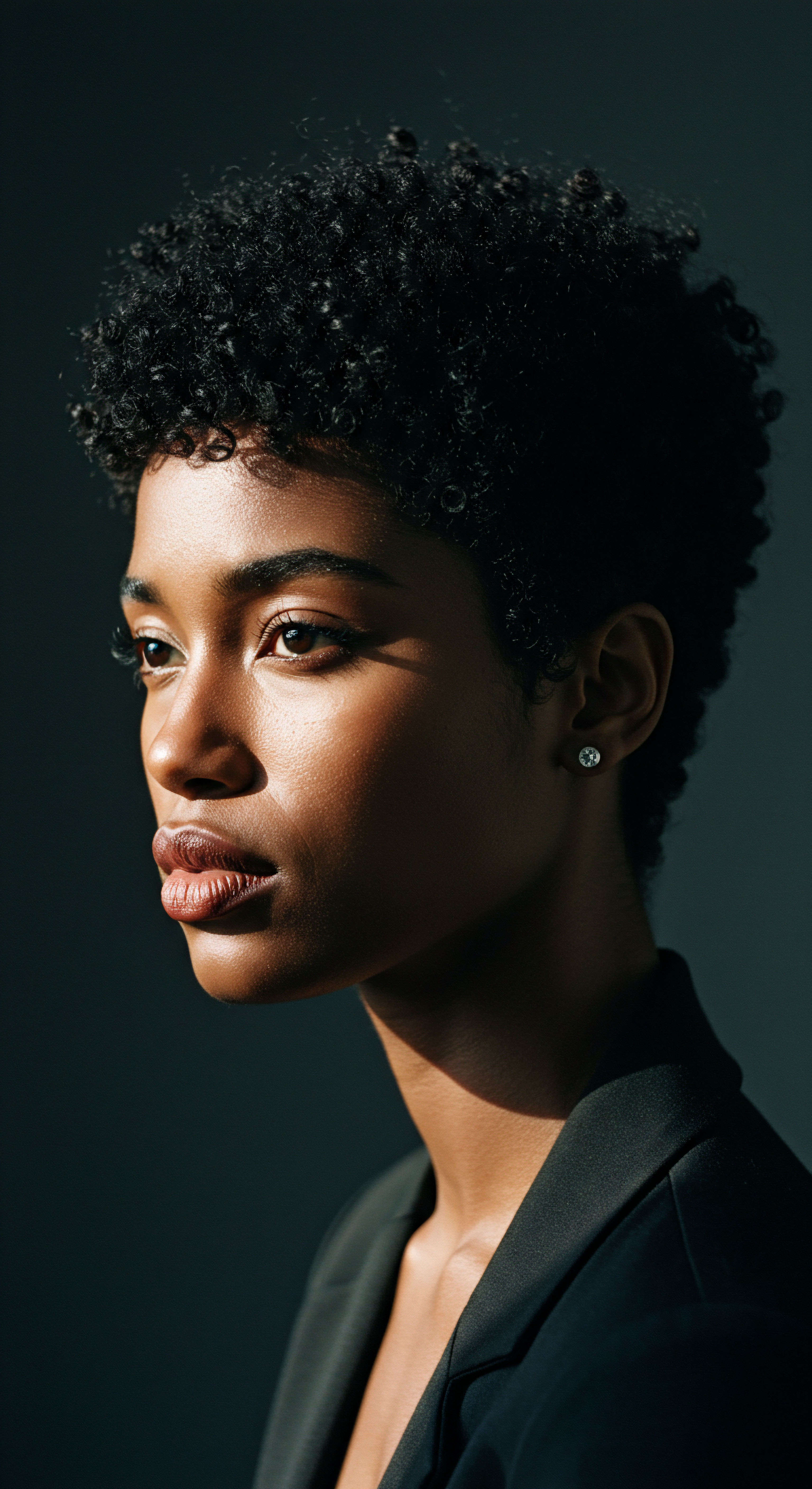
What Regulates Hair Follicle Activity?
The hair follicle, a miniature organ residing within the skin, possesses its own internal clock, a rhythm keeper that aligns with the body’s broader circadian system. This intricate connection suggests that the quality and consistency of our sleep could indeed send ripples through the very mechanisms that govern hair growth. The precise timing of cell division and rest within the hair follicle relies on these internal rhythms.
Consider the influence of specific biological messengers. Hormones like Melatonin, widely known for its role in sleep regulation, also hold sway over hair follicle cycling. Research indicates that melatonin directly modulates the anagen, catagen, and telogen phases.
Its presence influences the cyclic activity of hair follicles, even being synthesized within skin cells independently of photoperiodic regulation, acting as a defense against oxidative stress. A deficiency in this hormone may even accelerate graying and disrupt circadian growth cycles.
Furthermore, the hair follicle itself expresses a range of Circadian Clock Genes. These genes, which typically govern the body’s 24-hour rhythms, play a significant part in regulating hair cycle progression, hair aging, and pigment production. Studies have shown that disruptions to these clock genes can delay the initiation of the anagen phase, prolonging the resting period of hair follicles. This deep connection between our internal body clock and the hair follicle’s activity provides a compelling reason to explore how sleep, the ultimate orchestrator of our circadian rhythm, might influence hair health.
The hair’s growth cycle, a finely tuned biological process, is deeply connected to our body’s internal rhythms and hormonal balance.

Hair Follicles as Sentinels of Internal Rhythms
The hair follicle, far from being a passive structure, acts as a dynamic monitor of our internal state. Its responsiveness to various physiological signals makes it a unique model for understanding broader bodily functions, including the circadian clock. The rhythmic expression of circadian genes within the hair follicle itself suggests a localized sensitivity to changes in our sleep-wake patterns.
The secondary hair germ, containing actively cycling stem and progenitor cells, exhibits prominent rhythmic circadian gene expression during the critical initiation of hair growth. As hair growth progresses into the anagen phase, the epithelial matrix and the mesenchymal dermal papilla become key sites for this circadian activity. This cellular choreography, guided by internal timekeepers, underscores the potential for sleep disruptions to send disarray through the hair’s very foundation. The implications extend beyond simple hair loss, touching upon the broader concept of cellular regeneration and resilience.
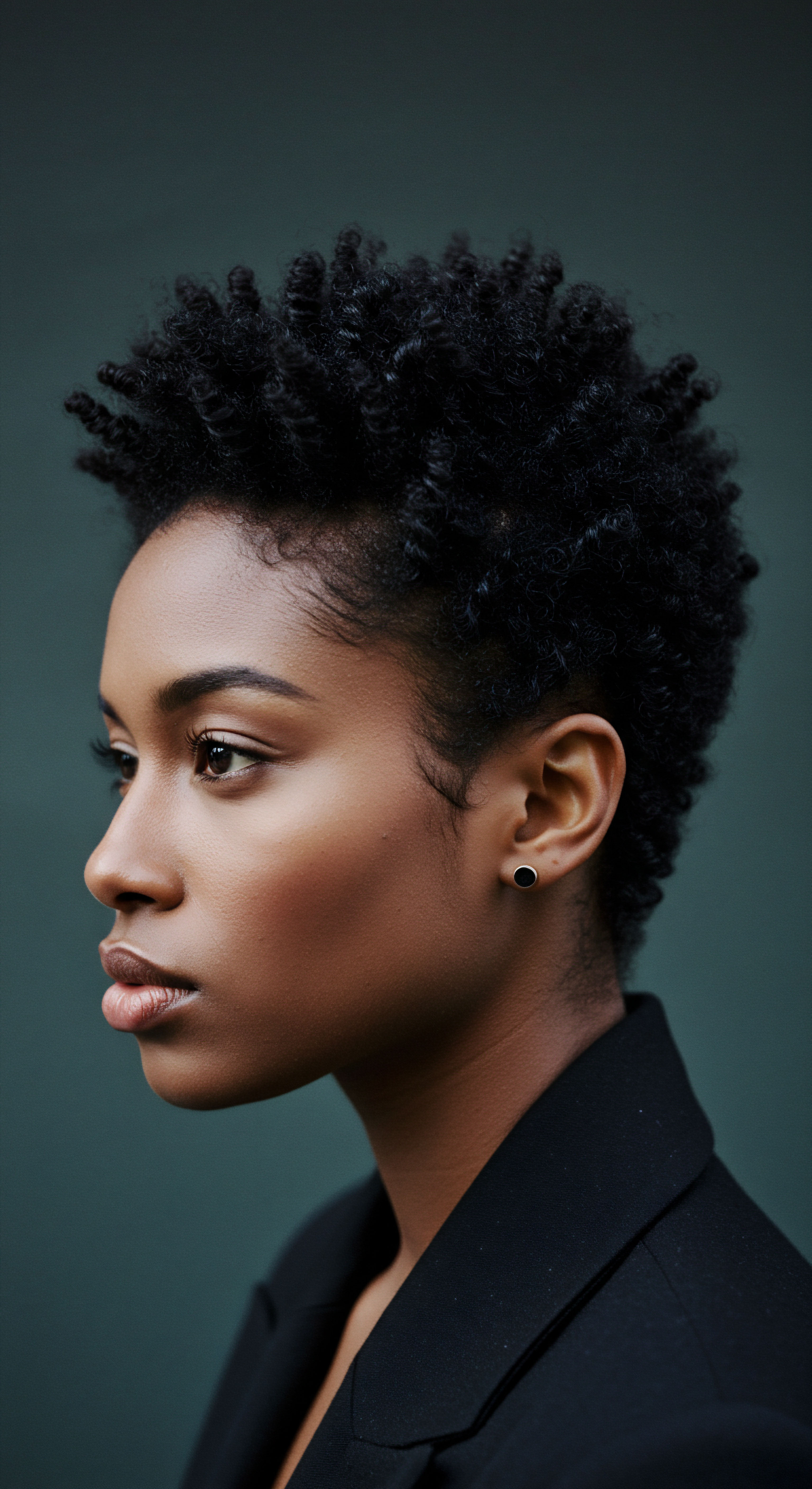
Ritual
Stepping from the unseen mechanics of hair growth, we now turn our gaze to the daily practices and rhythms that shape our hair’s lived experience. The notion of ‘beauty sleep’ has long been whispered through generations, a gentle acknowledgment that rest holds a particular magic for our outward appearance. But beyond the glow it lends to skin, how might our nightly rituals, or the disruption of them, practically influence the strands we tend with such care?
This section considers the more immediate, felt impact of sleep on our hair, moving from the foundational science to the visible realities that greet us each morning. It is here we explore the tangible links, those subtle shifts in hair vitality that may speak volumes about our nightly slumber.
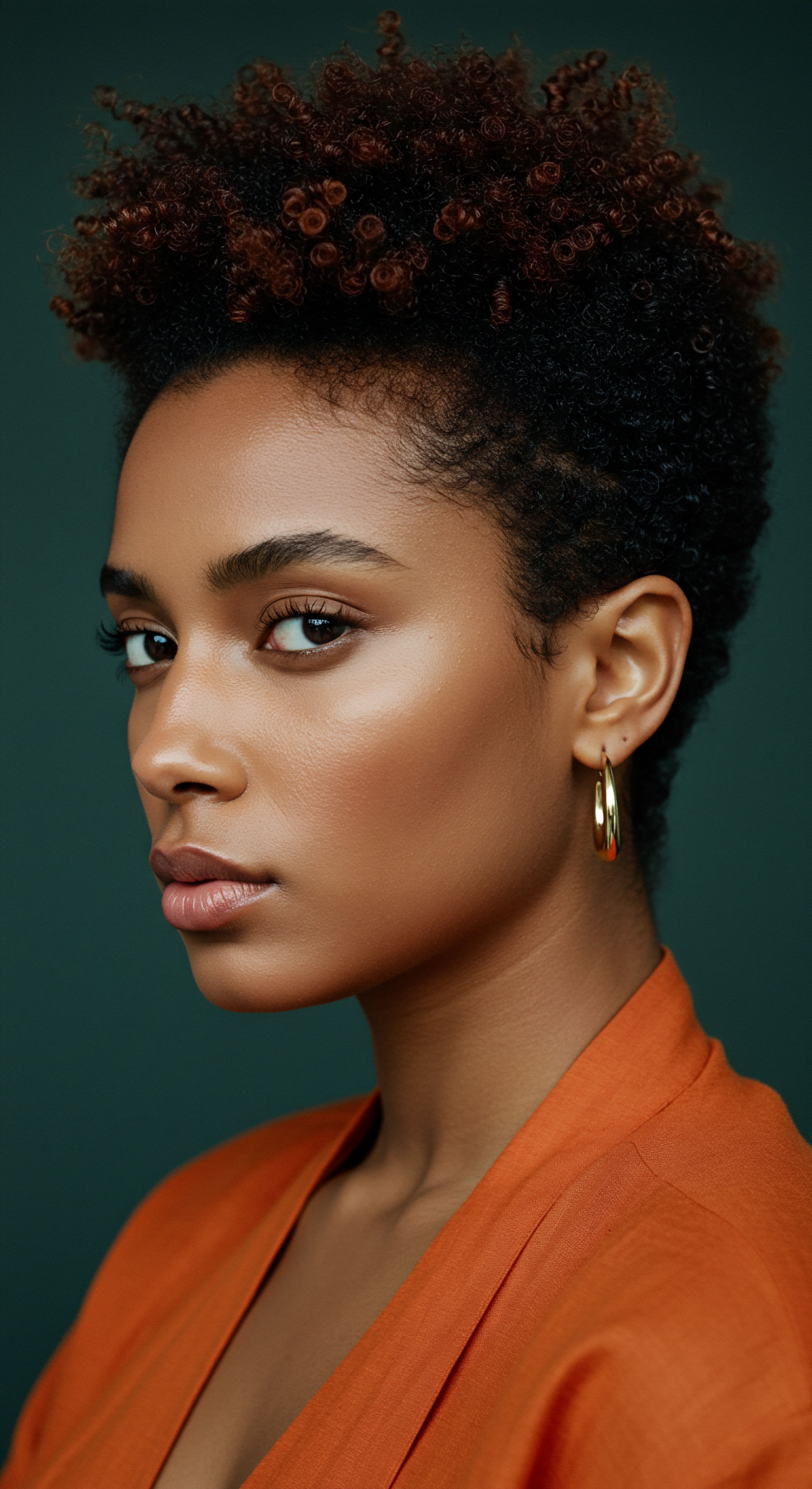
How Does Sleep Influence Hair’s Daily Life?
The hours we spend in slumber are not merely a pause from activity; they are a period of profound restoration for the entire body, including the cells responsible for hair growth. During deep sleep stages, our body engages in vital repair and regeneration processes. This is when essential growth hormones, including those that support hair growth, are released. A consistent lack of quality sleep can interrupt these restorative functions, potentially impacting the hair growth cycle and leading to noticeable changes in hair health.
One significant consequence of inadequate sleep is the elevation of Stress Hormones. When sleep is consistently disrupted, levels of cortisol, often called the stress hormone, can rise. Elevated cortisol levels are known to contribute to a temporary hair loss condition known as telogen effluvium.
This manifests as increased shedding and a thinning of hair. The hair follicles are prematurely pushed into the resting phase, leading to their earlier exit from the scalp.
Poor sleep can elevate stress hormones, leading to increased hair shedding and thinner strands.
Furthermore, sleep deprivation can hinder blood circulation throughout the body, including the scalp. Hair follicles require a steady supply of oxygen and nutrients delivered through the bloodstream for optimal growth. Restricted blood flow due to poor sleep can impede this process, potentially leading to weaker and slower-growing hair.

Sleep’s Direct and Indirect Pathways to Hair Change
The connection between sleep disruption and altered hair growth cycles is not always a straightforward path. It often involves a cascade of interconnected biological responses.
Consider the role of the body’s internal timekeeping. The circadian rhythm, our natural sleep-wake cycle, directly influences cellular repair and regeneration. Hair follicles themselves possess their own circadian clock genes.
When these internal rhythms are thrown out of sync by irregular sleep, the precise timing of cell division and rest within the hair follicle can be disturbed. This can mean that hair follicle stem cells, which are responsible for regenerating hair, may remain in an extended resting phase, delaying new hair growth.
An intriguing study conducted by Harvard Stem Cell Institute researchers, published in the journal Nature, identified a biological mechanism where a major stress hormone causes hair follicle stem cells to stay in an extended resting phase in mice, without regenerating the hair follicle and hair. The researchers pinpointed the specific cell type and molecule, GAS6, responsible for relaying the stress signal to the stem cells. They found that the stress hormone corticosterone (the rodent equivalent of human cortisol) prevented the dermal papilla from secreting GAS6, a molecule that can activate hair follicle stem cells.
Delivering GAS6 into the skin restored hair growth in mice experiencing chronic stress. This provides a fascinating, less commonly discussed molecular link between stress (often a consequence of sleep disruption) and the hair growth cycle.
Another pathway involves the immune system. Sleep disturbances can trigger various immunological reactions in the skin, which may influence the development of hair loss. Some studies suggest an association between hair loss and poor sleep quality, particularly in conditions like alopecia areata, an autoimmune disorder where the immune system attacks hair follicles. Insufficient sleep can act as a trigger for certain autoimmune disorders, and alopecia areata often accompanies other autoimmune conditions.
The cumulative effect of chronic sleep restriction, even at low levels, can compound these issues. Over time, consistent poor sleep can lead to a vicious cycle where stress and hormonal imbalances perpetuate, further hindering hair health.
| Hair Health Marker Hair Shedding Rate |
| Impact of Disrupted Sleep Increased, leading to noticeable thinning. |
| Underlying Mechanism Elevated cortisol levels push follicles into early telogen phase. |
| Hair Health Marker Hair Growth Speed |
| Impact of Disrupted Sleep Slower, potentially stunted. |
| Underlying Mechanism Disrupted circadian rhythms affect stem cell activity; reduced growth hormone release. |
| Hair Health Marker Hair Thickness |
| Impact of Disrupted Sleep Reduced shaft thickness. |
| Underlying Mechanism Impaired nutrient delivery due to reduced blood flow to scalp. |
| Hair Health Marker Hair Follicle Regeneration |
| Impact of Disrupted Sleep Delayed or impaired. |
| Underlying Mechanism Hair follicle stem cells remain in extended resting phase. |
| Hair Health Marker These impacts underscore the need for consistent, quality sleep to maintain vibrant hair. |

Practical Considerations for Hair and Sleep
For those seeking to nurture their hair, understanding the practical implications of sleep quality becomes a significant ritual. This extends beyond merely the number of hours slept to the depth and consistency of that rest.
- Consistency ❉ Maintaining a regular sleep schedule helps to regulate the body’s circadian rhythm, which in turn supports the natural cycling of hair follicles. Going to bed and waking up at the same time each day, even on weekends, can contribute to better sleep quality.
- Stress Reduction ❉ Since stress is a major mediator between sleep disruption and hair changes, adopting stress-reducing practices before bed can be beneficial. This might include gentle stretching, meditation, or reading.
- Environment ❉ Creating a serene sleep environment, cool, dark, and quiet, promotes deeper, more restorative sleep, allowing the body to prioritize repair functions, including those relevant to hair.

Relay
Beyond the personal experience of hair health and the foundational science of its growth, a deeper, more interconnected understanding awaits. How does the intricate dance of our internal biological clock, so finely tuned by the rhythm of sleep, truly orchestrate the complex regeneration of our hair, and what broader implications does this hold for our overall vitality? This section extends the conversation into the more sophisticated interplay of biological systems, cultural nuances, and cutting-edge research, moving beyond direct causation to explore the multi-dimensional influences that shape our hair’s destiny. We consider how sleep, a seemingly passive state, acts as a powerful relay, transmitting signals that can either sustain or disrupt the very essence of follicular life.

The Circadian System and Hair Follicle Autonomy
The concept of a localized circadian clock within peripheral tissues, such as the hair follicle, represents a significant area of contemporary research. While the central circadian clock resides in the suprachiasmatic nucleus of the brain, many other tissues possess their own self-sustaining oscillators. The hair follicle is one such remarkable mini-organ, exhibiting rhythmic gene expression that aligns with the body’s daily cycle.
This autonomy, however, does not mean complete independence. The peripheral clocks are synchronized by signals from the central clock, which is, in turn, heavily influenced by light-dark cycles and sleep-wake patterns.
This synchronization is vital for optimal hair growth. Studies using mice with mutations in central clock genes, such as Clock and Bmal1, have revealed a significant delay in the progression of the hair growth phase. These clock genes affect the expression of key cell cycle control genes, suggesting that a disruption in the circadian rhythm can literally halt the cellular machinery responsible for hair production.
Specifically, in Bmal1 mutant mice, keratinocytes in critical compartments of the hair follicles were observed to be arrested in the G1 phase of the cell cycle. This arrest prevents cells from dividing and moving into the active growth phase, thereby prolonging the resting phase and delaying hair regeneration.
The hair follicle’s intrinsic biological clock, sensitive to sleep patterns, profoundly influences its regenerative capacity.
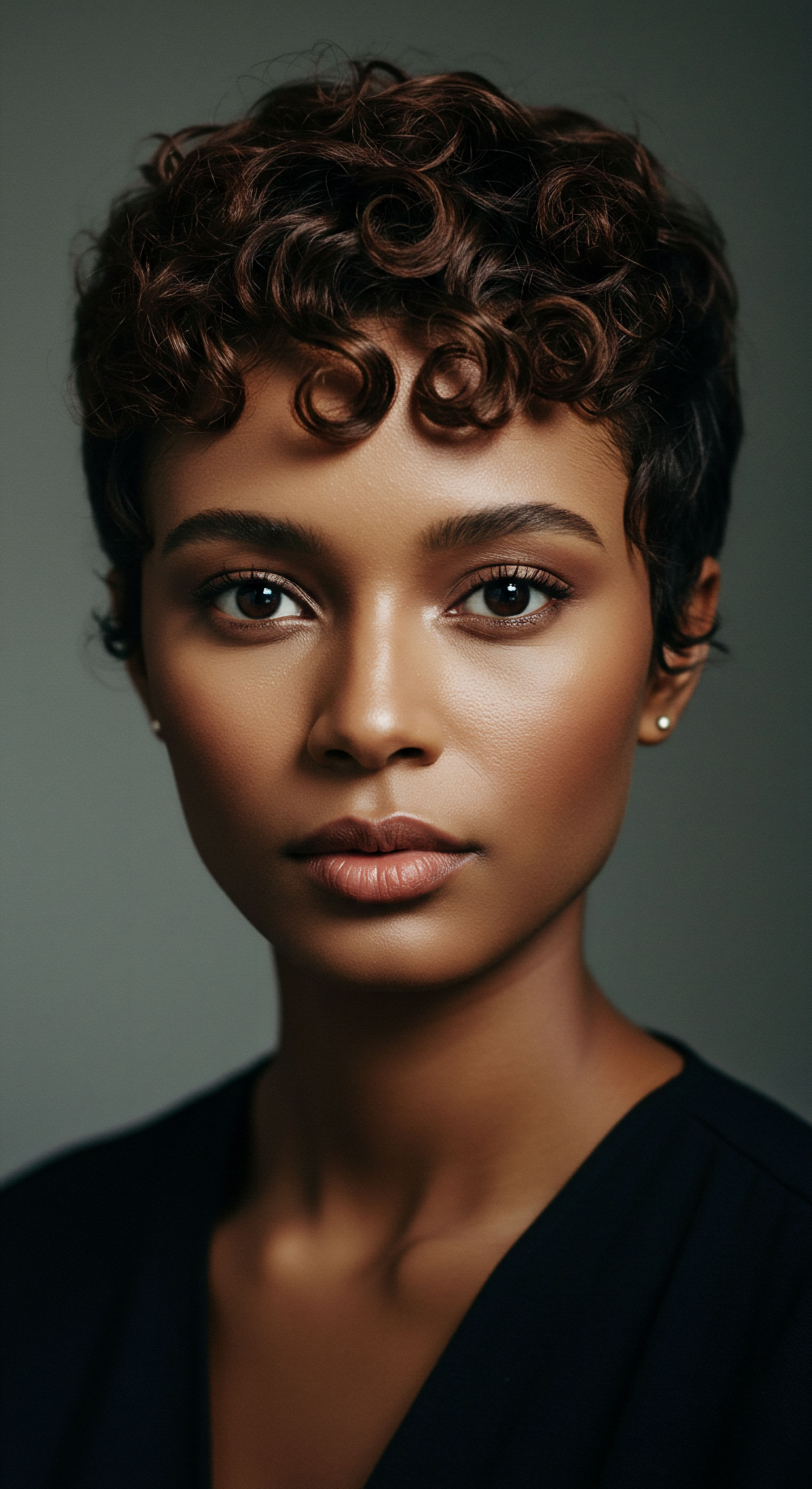
Hormonal Orchestration and Hair Cycle Sensitivity
The body’s hormonal landscape undergoes profound shifts during sleep, and these fluctuations directly impinge upon hair follicle behavior. Melatonin, for instance, is not solely a sleep-inducing agent; it is a potent regulator of hair follicle cycling. Its synthesis within the skin itself underscores a localized protective role, acting as a first-line defense against oxidative stress that could otherwise damage hair follicle cells.
A particularly compelling aspect of melatonin’s influence comes from research on cashmere goats, where it directly modulates hair follicle cycling by synchronizing anagen, catagen, and telogen phases with seasonal photoperiod changes. While human hair growth is not typically seasonal in the same overt way, this animal model highlights the deep, evolutionarily conserved connection between melatonin, light, and follicular rhythm. A deficiency in melatonin can indeed accelerate graying and disrupt hair growth cycles in humans.
Conversely, stress hormones, particularly Cortisol, represent a significant disruptor. Chronic sleep deprivation leads to sustained high levels of cortisol. Cortisol dysregulation can disrupt cell signaling and induce oxidative stress within the hair follicle, impeding its normal transitions through the growth cycle.
In-vitro studies have shown that pro-inflammatory cytokines, often elevated during stress, can cause structural abnormalities within hair matrix cells and the inner root sheath, directly affecting hair quality and growth. This demonstrates a molecular-level interference that moves beyond mere correlation, pointing to direct physiological impact.

A Closer Look at the Stress-Hair Connection
The link between stress and hair loss is well-established, but the mechanisms are increasingly being elucidated. A study published in Nature by Hsu and colleagues at Harvard identified how a major stress hormone (corticosterone in mice, analogous to cortisol in humans) causes hair follicle stem cells to remain in an extended resting phase. They discovered that this hormone acts on the dermal papilla, a cluster of cells beneath the hair follicle, preventing it from secreting a molecule called GAS6. GAS6 is crucial for activating hair follicle stem cells.
When GAS6 was administered to stressed mice, hair growth was restored. This suggests a specific, targetable pathway by which stress, often stemming from or exacerbated by sleep disruption, directly influences hair regeneration at the stem cell level. This is a significant finding because it moves beyond the general idea of “stress” to a concrete molecular interaction.

Cultural Contexts of Sleep and Hair Wellness
Beyond the biological mechanisms, cultural practices and historical wisdom often hold subtle truths about the interconnectedness of sleep and hair wellness. Across various traditions, the act of preparing for sleep is often intertwined with hair care rituals, hinting at an intuitive understanding of night’s restorative power.
- Nightly Hair Protection ❉ For many Black women, covering hair at night with silk scarves or bonnets is a deeply ingrained practice. This ritual protects textured hair from friction, moisture loss, and tangling, but it also fosters a sense of self-care and can contribute to better sleep by ensuring hair is secure and comfortable. This practical protection against physical damage indirectly supports the hair follicle by reducing stress on the strands themselves, allowing the body’s internal repair processes to proceed undisturbed.
- Ayurvedic Traditions ❉ Ancient Ayurvedic medicine, originating from India, emphasizes holistic wellness. Practices include scalp massages with herbal oils (like coconut or bhringraj) before bed. These massages not only nourish the hair and scalp but also stimulate blood circulation and promote relaxation, which is conducive to restorative sleep. This highlights a long-held understanding that a calm mind and nourished scalp contribute to hair vitality, a process amplified during restful sleep.
- Traditional Beliefs in Rest ❉ Many cultures traditionally hold a high regard for periods of rest and quiet, viewing them as essential for overall well-being. While not always explicitly linked to hair in modern scientific terms, the underlying principle of allowing the body to reset and repair during these times implicitly supports all bodily functions, including hair growth. The very term “beauty sleep” is a reflection of this enduring, intuitive understanding.
These practices, passed down through generations, speak to a collective wisdom that recognizes the deep reciprocity between our internal state, our nightly rhythms, and the visible health of our hair. They serve as a reminder that scientific inquiry often validates what human experience has long known.
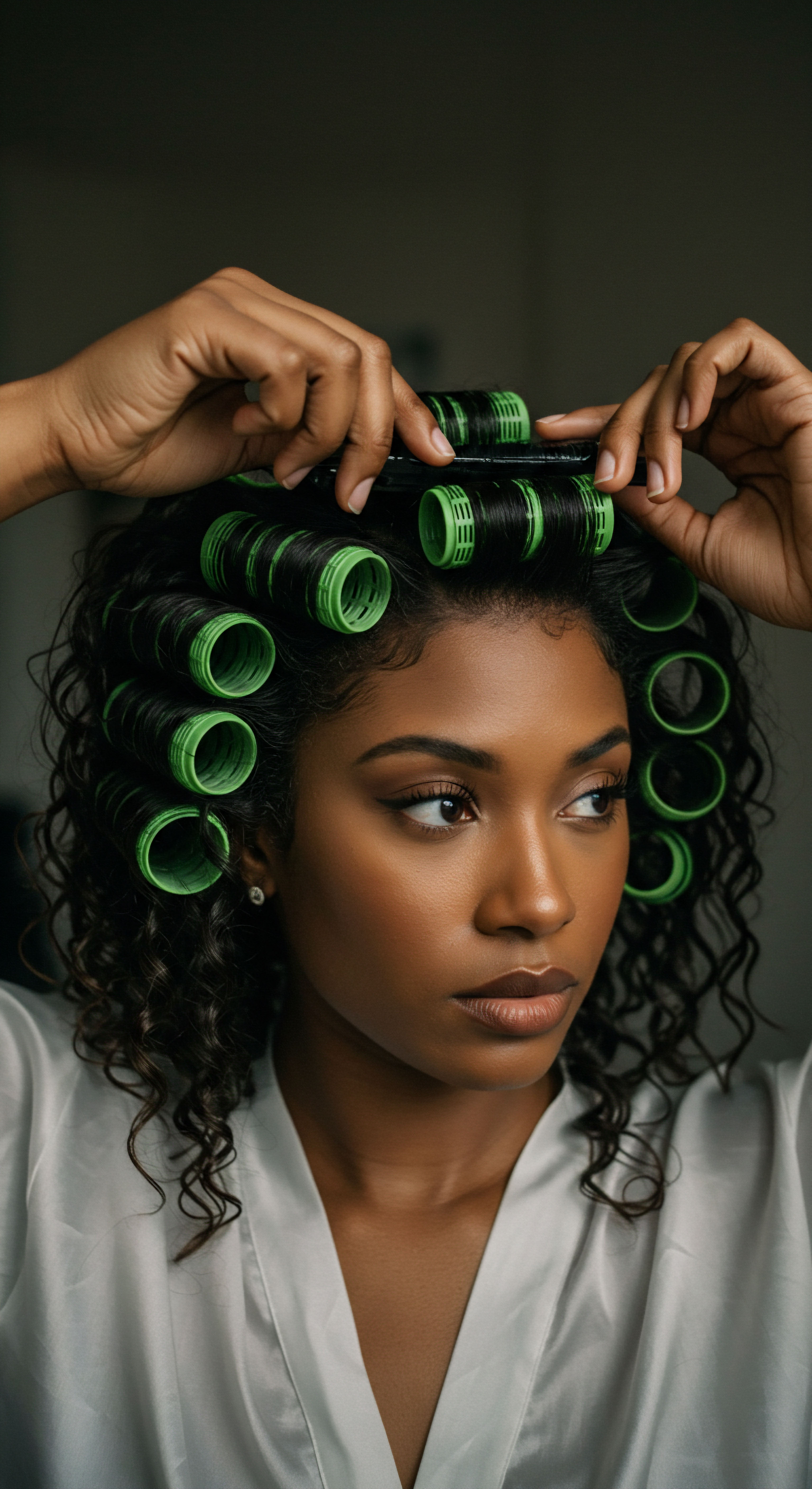
Reflection
The journey into the intricate connection between disrupted sleep and hair growth cycles reveals a truth far more nuanced than a simple cause-and-effect. It points to a profound biological synchronicity, where the silent hours of slumber orchestrate a delicate dance of cellular renewal and hormonal balance, a dance intimately felt by every hair follicle. Our hair, particularly textured strands that carry stories of resilience and heritage, stands as a visible barometer of this internal world.
The wisdom of generations, in its gentle nightly rituals, echoes the latest scientific insights ❉ that tending to our rest is a deeply meaningful act of self-care, one that ripples outward to touch the very vibrancy of our being, from the inside out. The question of sleep’s impact on hair growth invites us not just to understand biology, but to listen more closely to our own rhythms, recognizing that the health of our hair is inextricably woven into the fabric of our holistic well-being.

References
- 1. Ma, J. Wang, S. Wang, X. Hou, Y. Ma, S. & Li, C. (2023). Melatonin’s Role in Hair Follicle Growth and Development ❉ A Cashmere Goat Perspective. Animals, 13(13), 2174.
- 2. Li, Y. Wu, C. Lu, C. Wang, S. Sun, C. Li, S. & Zhang, Z. (2023). Hair Follicles as a Critical Model for Monitoring the Circadian Clock. International Journal of Molecular Sciences, 24(3), 2636.
- 3. Al-Mutairi, N. & Al-Qattan, H. (2022). Association between alopecia areata and sleep disturbances ❉ a case-control study. Clinical, Cosmetic and Investigational Dermatology, 15, 2371–2378.
- 4. HairFree & HairGrow. (2023). Sleep and Hair Loss. Relationship Explained.
- 5. Clinikally. (2024). Impact of Sleep Deprivation on Hair Health.
- 6. Wimpole Clinic. (2023). Can Lack of Sleep Cause Hair Loss?
- 7. Treatment Rooms London. (2024). Can A Lack of Sleep Cause Hair Loss?
- 8. The Hairy Pill. (2024). Does Lack of Sleep Cause Hair Loss?
- 9. Al-Abadie, M. S. & Al-Saffar, A. M. (2023). Melatonin and the Human Hair Follicle. Journal of Drugs in Dermatology, 22(3), 284-289.
- 10. Lau, J. (2021). How chronic stress leads to hair loss. Harvard Stem Cell Institute (HSCI).
- 11. Fischer, T. W. Burmeister, G. Schmidt, N. & Elsner, P. (2004). Melatonin increases anagen hair rate in women with androgenetic alopecia or diffuse alopecia ❉ Results of a pilot randomized controlled trial. Skin Pharmacology and Physiology, 17(3), 152-157.
- 12. National Institutes of Health (NIH). (2021). How stress causes hair loss.
- 13. Harvard Gazette. (2021). Researchers discover how chronic stress leads to hair loss.
- 14. Hilaris Publisher. (2024). Assessing the Impact of Stress on Hair Follicle Regeneration ❉ Mechanisms and Therapies.
- 15. Mattress Depot USA. (2021). The Effects of Sleep Deprivation on Hair Health.
- 16. Geyfman, M. & Andersen, B. (2010). Clock genes, hair growth and aging. Aging, 2(9), 578-580.
- 17. Li, Y. Wu, C. Lu, C. Wang, S. Sun, C. Li, S. & Zhang, Z. (2023). Melatonin regulates the periodic growth of secondary hair follicles through the nuclear receptor RORα. Frontiers in Veterinary Science, 10, 1198647.
- 18. Fischer, T. W. Burmeister, G. Schmidt, N. & Elsner, P. (2004). Melatonin increases anagen hair rate in women with androgenetic alopecia or diffuse alopecia ❉ Results of a pilot randomized controlled trial. ResearchGate.
- 19. DUTCH Test Blog. (2023). Stress, Hair Loss, and Cortisol Connection.
- 20. World Hair Council. (2024). Causes of Hair Loss.
- 21. Geyfman, M. Kumar, V. Sato, S. & Andersen, B. (2021). Local circadian clock gates cell cycle progression of transient amplifying cells during regenerative hair cycling. Proceedings of the National Academy of Sciences, 110(23), 9418-9423.
- 22. DiStefano Hair Restoration Center. (2025). Does Sleep Affect Hair Health?
- 23. Geyfman, M. Kumar, V. Sato, S. & Andersen, B. (2013). Circadian Clock Genes Contribute to the Regulation of Hair Follicle Cycling. PLOS Genetics, 9(5), e1003463.
- 24. MONPURE. (2024). Hair Loss ❉ Is Lack of Sleep Stunting Growth?
- 25. Typology. (2024). The consequences of a lack of sleep on your hair.
- 26. DermiMatch Hair Clinic. (2024). Lack of Sleep and Hair Loss ❉ Exploring the Evidence.
- 27. Wikipedia. (2024). Hair loss.
- 28. trichology. (2024). Sleep And Hair Growth ❉ Enhance Your Hair Health Through Better Sleep.
- 29. Trueb, R. M. (2020). Integrative and Mechanistic Approach to the Hair Growth Cycle and Hair Loss. Journal of Clinical and Aesthetic Dermatology, 13(12), 15-22.
- 30. Centre Clauderer. (2024). Hair and sleep ❉ the importance of the night for hair health.
- 31. HCPLive. (2025). Hair, Scalp Health Linked to Perceived Stress and Sleep Quality.
- 32. Ghasemi, R. Jafari, M. & Kazemi, A. (2022). An overview of the genetic aspects of hair loss and its connection with nutrition. Journal of Cosmetic Dermatology, 21(9), 3925-3932.
- 33. Zantman Clinic. (2024). The details of the hair growth cycle.
- 34. MMR Research. (2024). While you were sleeping ❉ Trends in sleep health.
- 35. Williams, M. (2021). How a Hair Wrap Routine Protects More Than Just My Hair. Sleep.com.
- 36. Harley Street Hair Clinic. (2024). Emotional stress and hair loss.
- 37. Quora. (2025). How do cultural differences in hair care practices affect hair health and growth?
- 38. Hair Doctors. (2025). Can Lack of Sleep Make You Lose Hair? Uncovering the Connection.
- 39. Oserth. (2024). Embracing Cultural Practices for Healthier Hair.